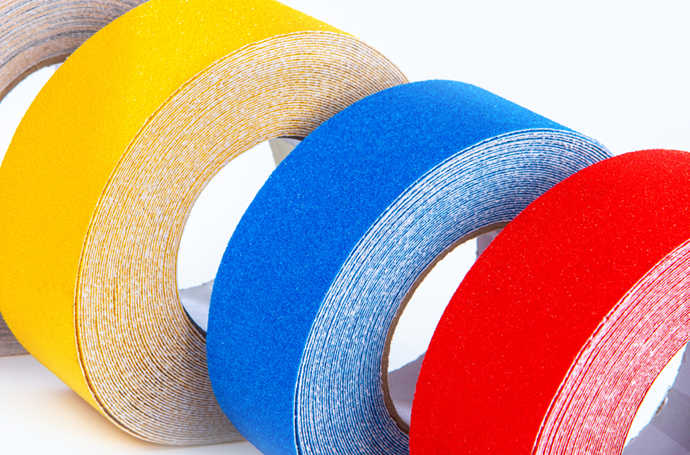
Small businesses can use reflective tapes for marketing or to increase visibility for pedestrians on the sidewalks as well as workers in workplaces.
Reflective tape is described as a film that reflects light by using glass spheres or artificial prisms. Glass bead tapes also reflect light by utilizing microscopic beads that serve as parabolas and return it to its source. Prismatic tapes absorb and reflect light using artificial prisms or mirrors. When any tape’s surface is painted with a translucent pigment, the reflected light is colored.
Reflective and retro-reflective materials are often confused. A mirror is reflective because it sends light in all different directions. A retro-reflective surface returns a focused point of light back to the source of the original light.
One of the most critical properties of reflective tape is its capacity to absorb light, alter its color, and return it to its source. That is why stop signs are highlighted in red at night. At night, yield signs are highlighted with a yellowish color, and so on. Without this feature, traveling at night would be considerably different and more dangerous.
The variety of reflective tapes and their shades is mind-boggling. The enormous diversity necessitates the use of a range of intensities, forms, and colors. Trucks, for instance, use a vivid red and white contrasting dot tape, while life vests use a bright white tape that can be seen from a great distance.
Stop signs in cities may be made of inexpensive reflective tape that contains glass beads. However, interstate street signs need a more costly prismatic film.
History of Reflective Tape
Let us begin with the fundamentals. Reflectivity is not a new concept. Nature has always had it in some form. The refraction of light off of surfaces is what allows us to perceive them. Retro-reflectivity also exists in nature: A cat’s eye is a good illustration of this phenomenon. Thus, retro-reflectivity was observed, not invented. It was conceived as a method for reproducing these properties artificially in a functional manner.
Two technological breakthroughs also occurred in the field of retro-reflectivity. The first is a naturally round glass bead, while the second is an artificial prism. These developments contributed significantly to the creation of reflective surfaces or tape.
How Does It Work?
You might notice reflective tape every day and night. However, have you ever considered how it works?
Reflective tape (alternatively referred to as retro-reflective tape) acts by transmitting light back to the point of illumination. In other terms, the tape illuminates only things that are near or in line with the light source.
For instance, suppose two individuals are walking on a street, one on each side. If individual “A” has a flashlight and points it down the road at a reflective tape attached to a trailer, the tape will illuminate for them. However, the individual on the opposite side of the road is unlikely to see the tape illuminated. They could both see the tape if they both shine a light toward it. This occurs as a result of the tape’s addition of either prisms or glass beads that absorb, focus, and reflect light directly to the origin.
What mechanism does it use to do this? Consider that you are in the middle of a circular space. If you throw a ball against a wall, it will return to you. Reflective tape functions similarly.
The tapes bend light or refract in such a position that it goes back in the same direction from which it entered. This brings up another remarkable feature of reflective tape. In the first illustration, one person held a light while the other lacked one. If all parties had lights, they could both see the tape illuminate. What is remarkable about this is that the tape would not have to face the viewer horizontally to bounce light back. Additionally, it is capable of reflecting numerous beams in multiple directions. Although it is better to be flat against the light, you can get a decent return of light even at sharp angles.
Additionally, keep in mind that their eyes must be aligned with the light to see the reflection of the tape. When you are out driving on the road and pass a semi-trailer rig, note how the reflective tape lights up when you are far behind. When you approach a stop sign, you will find that the tape is no longer illuminated. That is because the angle between the light and the film, and then between the tape and your eyes, has grown excessively large. In other terms, the angle of the light in comparison to your eyes is important. If you hold the light very close to your head, the reflectivity will remain constant as you approach it.
Usage of Reflective Tape
Safety is one of the most important uses of reflective tape. Reflective tape is used to decorate police, ambulance, and fire department cars and uniforms. Reflective tapes are also used to label walkways, low-hanging obstacles or buildings, ledges, fences and posts, factory equipment, automobiles and bikes, helmets, children’s clothing, and walking sticks for the blind and elderly, among other things. Additionally, they are used in small businesses for advertisement/marketing purposes.
Conclusion
As you will see in the list above, reflective tape has a multitude of possible applications in addition to the more conventional ones, such as road safety signage, work gear, and vehicle labeling and identifying. It has an important function in modern society and helps keep us all safe.



